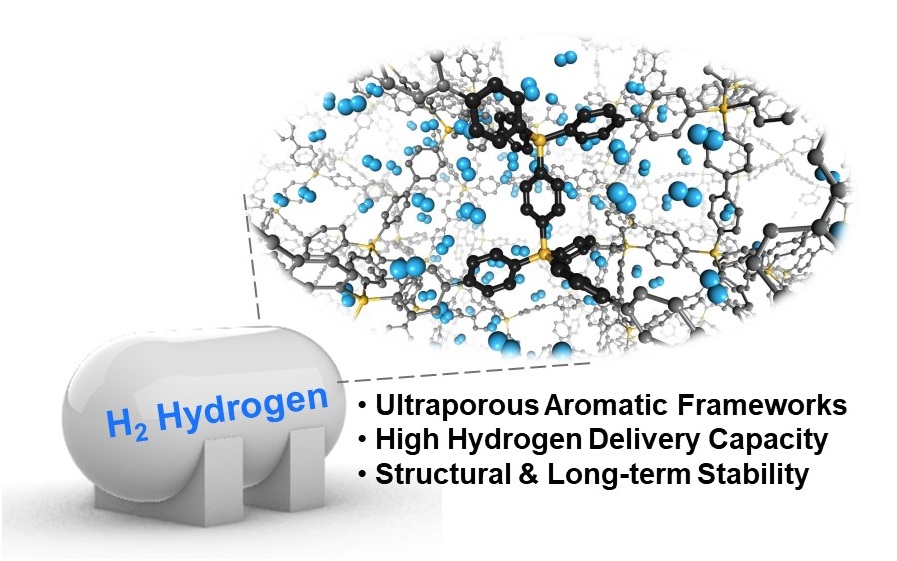
Hydrogen storage is crucial in the shift toward a carbon-neutral society, where hydrogen serves as a pivotal renewable energy source. Utilizing porous materials can provide an efficient hydrogen storage solution, reducing tank pressures to manageable levels and circumventing the energy-intensive and costly current technological infrastructure. Herein, two highly porous aromatic frameworks (PAFs), C-PAF and Si-PAF, prepared through a Yamamoto C─C coupling reaction between trigonal prismatic monomers, are reported. These PAFs exhibit large pore volumes and Brunauer–Emmett–Teller areas, 3.93 cm3 g−1 and 4857 m2 g−1 for C-PAF, and 3.80 cm3 g−1 and 6099 m2 g−1 for Si-PAF, respectively. Si-PAF exhibits a record-high gravimetric hydrogen delivery capacity of 17.01 wt% and a superior volumetric capacity of 46.5 g L−1 under pressure-temperature swing adsorption conditions (77 K, 100 bar → 160 K, 5 bar), outperforming benchmark hydrogen storage materials. By virtue of the robust C─C covalent bond, both PAFs show impressive structural stabilities in harsh environments and unprecedented long-term durability. Computational modeling methods are employed to simulate and investigate the structural and adsorption properties of the PAFs. These results demonstrate that C-PAF and Si-PAF are promising materials for efficient hydrogen storage.

https://doi.org/10.1002/adma.202401739
 Lutetium Texaphyrin–Celecoxib Conjugate as a Potential Immuno...
Lutetium Texaphyrin–Celecoxib Conjugate as a Potential Immuno...
 Boc Protection for Diamine-Appended MOF Adsorbents to Enhance...
Boc Protection for Diamine-Appended MOF Adsorbents to Enhance...

















